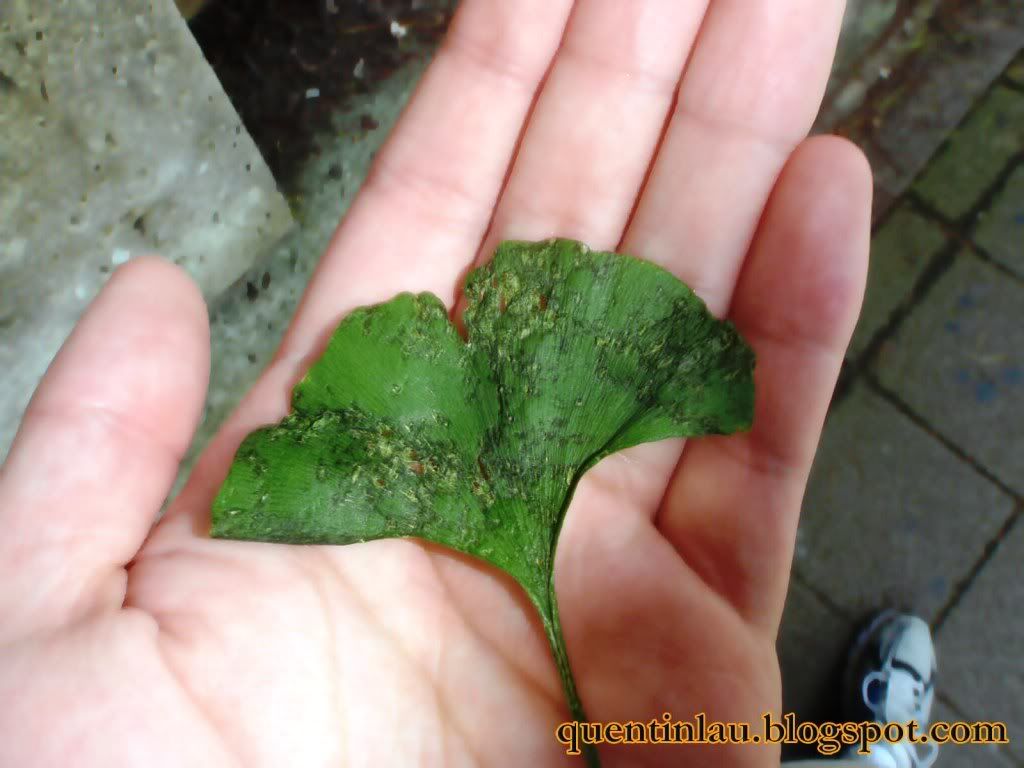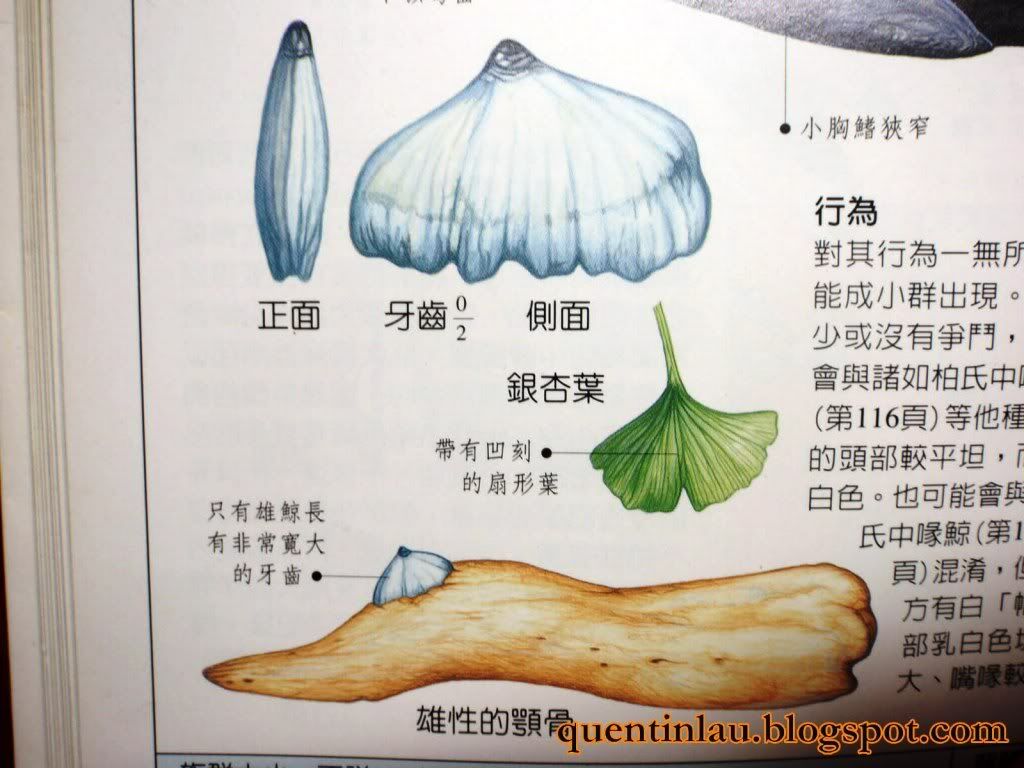
A fallen ginkgo leaf near Tsukiji Honganji on Shin-Ohashi road (新大橋通り), taken last year while I was leaving Tsukiji in Tokyo trip last year
Ginkgo (銀杏) is a particular kind of tree seen in some areas of Asia such as China, Korea, and Japan. In fact it now has no living relatives so it's a rather unique species and is also considered a living fossil. Its fan shape leaf is a distinctive feature of this species.

Ginkgo leaves turn yellow in autumn. Picture from Wikipedia
Gingko is originally cultivated in China, and while now widely cultivated, it is apparently rarely seen in the wild. It shares the same name (character-wise) in Chinese and Japanese as 銀杏, which literally means "Silver Apricot". The English name "ginkgo" is apparently a mispelling of "ginkyo / ginkyou" when a German botanist saw it in a Japanese garden in late 17th century, and the name stuck ever since.

One of the 6 surviving ginkgo trees that survived the atomic bomb in Hiroshima. Picture source here
Perseverance is something associated with this tree: When the atomic bomb Little Boy as dropped on Hiroshima in the closing month of WWII, devastating damage had occured, and many lives were lost. However 6 ginkgo trees have managed to survive, rejuvenate, and are still alive to this day. They are labelled "A-bombed Ginkgo trees", and as they presevere desptie much brutality they are sometimes known as the "bearer of hope" for the locals. More details on those trees can be found here if you are interested.

Picture of a tooth from a Gingko-toothed beaked whale. Note the similarity with the Gingko leaf (hence the name of the whale).
As for something unrelated, a whale species called Ginkgo-toothed beaked whale is named due to its protruding teeth midway down the jaw having the shape of a gingko leaf. Beaked whales are in general one of the least observed and studied species due to its remote and deep sea habitat, and this one is no exception.
With its longevity and preseverance, ginkgo somehow reminds me of how they represent the Japanese people in a way. Both are known to be long-lived, and both are known to endure through a lot of hardship and face them through somehow. This is perhaps something worth thinking about... And even though there are a lot more stuff one can write about on this tree, I think I'd leave it here for today.
P.S. How have I become so pseudo-philosophical all of a sudden?! o_o;; Oh well, this is a bit of a random post, but this has somehow stuck to my head recently, and I thought I might share it out. Hope you'd like it though!

Someone must have been hitting the books lately. Interesting face though nonetheless.
ReplyDelete@ Tom:
ReplyDeleteI remember I took a picture of a ginkgo leaf last year as seen on top of the post, and always wanted to talk about it as part of a trip post, but it somehow ended up as a post just on the ginkgo itself.
It's a bit of a random post at the end, but I do hope you enjoy the little facts here & there :o
I hear about Ginkgo all the time, whether it's in anime, books, or even restaurant names. Never really gave it much thought except that 銀杏 is a rather pretty name.
ReplyDeleteKnow so much more about this plant now. ^ ^ Thanks!
@ Yi:
ReplyDeleteSounds like you have encountered Gingko quite a lot of times in different mediums, at least more than me for sure! :o
Ginkgo really does stand out among other plants for a lot of reasons, and the more I've read about it the more interesting facts there are, including how it's one of the few species that have separate male and female plants. I'm glad that you get to know something in this post!